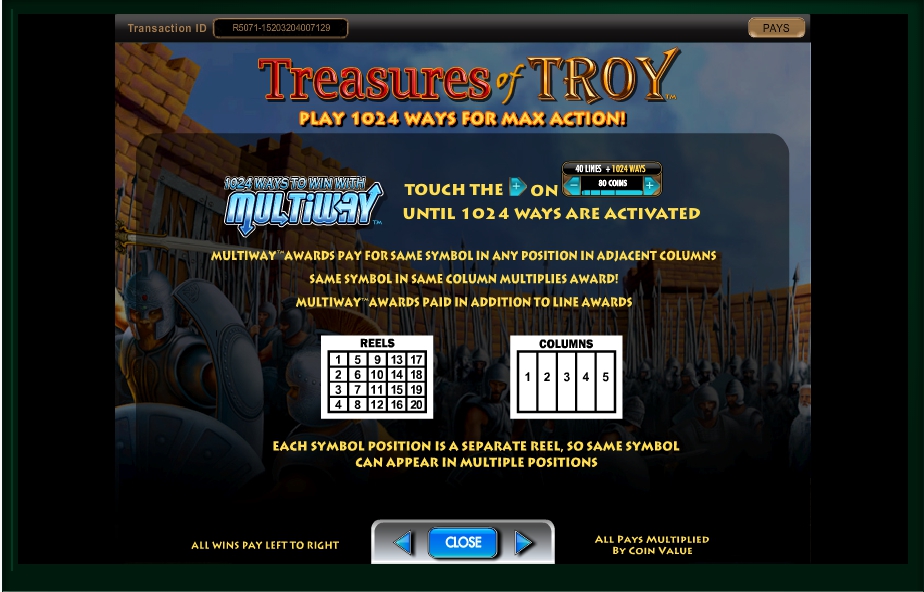Project Coin Fruit Machines
Such as fruit machines, pool tables, jukeboxes, quiz machines, touchscreen machines, arcade video game machines and most other coin operated equipment. The very lastest fruit machines and pool tables from all of the leading manufacturers like Bellfruit,Barcrest,Maygay,Global, Project coin, Games Media,Vivid,QPS,Extreme.
The goal of this project is to build a machine where you can pour a mixed cup of large and small marbles into one end and have the machine automatically sort them into two different cups by size. Fruit machine, coin mechanism, electro mechanical, 1 x fruit machine coin mechanism, found while tidying workshop old bits and bobs from pinball machines as found as pictured exactly. The only thing missing is the money collection box. Fruit machine, coin mechanism.it is unmarked and looks new. This is the second video in a series of Visual Basic projects!In this video, I will be creating a very simple slot machine. The code will be posted. I’m going to look at fruit machine cheats for £5 jackpot machines, and how you can turn your little trip to the seaside into a profitable venture with these low jackpot, low stakes fruit machines. Fruit machine cheats for £5 jackpot machines are often considerably different to their larger £100 and £70 jackpot counterparts,.
In the 80s, you may have put coin after coin into your favourite arcade machine, giving a countless amount of money to a large box. Fast-forward 25 years or so, and using a £25 Raspberry Pi 3, along with some creative hacking, you can relive your high-score glory days as you play your favourite old-school classics to your heart's content.
Independent Sheffield-based web developer Matt Brailsford, aka Circuitbeard, shares his retro-Pi plans, which use a repurposed miniature desktop arcade machine as the housing.
Advertisement
WHAT YOU'LL NEED
For this build, you'll need a Raspberry Pi with a memory card, a Pimoroni Picade PCB, and a TFT screen with an HDMI input, and an HDMI cable and power supply. Additionally, procure a panel mount joystick, generally using microswitches, electrical buttons, a USB power supply with a micro USB plug, and a USB-A to micro USB cable. Four-ohm speakers and a 3.5mm audio jack are needed for audio. A Wi-Fi dongle (or the Pi 3's built-in Wi-Fi) and wireless keyboard are helpful for setting everything up after it's in your cabinet.
INSTALL THE SOFTWARE
Power up your Raspberry Pi and monitor, then connect them with the HDMI cable. Install a piece of software called RetroPie, following the instructions that can be found on GitHub. This will set up your Pi as a retro-games emulator and will allow you to put ROMs, or copies of video games, on to it to play. The simplest way to add ROMs is with a USB
drive, as also outlined in that wiki. A good source for these files is archive.org/details/internetarcade.
SET UP THE CONTROLS AND CABINET
Plug the Picade PCB into your Raspberry Pi via USB. Wire your joystick and buttons into the Picade board after connecting them via USB cable. The Raspberry Pi will then interpret button and joystick input as keyboard presses. Plug the audio jack into the Raspberry Pi's output port and the Picade PCB's 3.5mm input jack, then wire your speakers into the adjacent screw terminals. Connect the Wi-Fi/Ethernet and a keyboard if using it. You can also use a custom-built kit, such as the Picade, for greater convenience.

Key concepts
Physics
Engineering
Gravity
Mechanical design
Introduction
Have you ever used a coin-sorting machine to separate pennies, nickels, dimes and quarters? When you need to separate things that are all mixed together, using a machine can be much faster than picking them apart by hand. In this project you will build a machine that can automatically separate two different size marbles—powered by nothing but gravity!
Project Coin Fruit Machines For Sale
Background
Sorting machines are used in many different applications, but they all have something in common. They automate a task that would be time-consuming or even impossible to do by hand. It might not be that difficult to sort a pocketful of coins manually, but what if you worked at a bank and had to sort thousands of coins? It would be nice to have a machine to do it! Mining is another example. Early miners would use a manual process called panning to separate gold nuggets from dirt and sand in a pan. Today, huge industrial machines are used to separate valuable gems and minerals from other rocks and dirt. Many recycling facilities have machines that can automatically separate paper, plastic, and metal objects—meaning that if your town has single-stream recycling, you can just dump all your recyclables into one bin at home, without sorting them yourself!
How exactly do machines separate all these different materials? They make use of the fact that different objects and materials have different properties. For example, some materials are magnetic and some are not, so you can use magnets to separate magnetic and non-magnetic materials. Materials have different densities—meaning some will float in water and some will sink. Some will be easily blown away by a strong puff of air, while others are heavy enough to stay put. Objects have many different sizes and shapes. Some might have smooth, round shapes that let them roll easily (such as a ball) and others might have irregular or flat shapes that make them get stuck easily (such as a flat piece of cardboard). Smaller objects can fall through holes in a grate while larger objects get stuck on top of it. In this project you will make use of that last feature to separate marbles with two different diameters.
Materials
- Plastic cups
- Craft sticks
- Paper
- Tape
- Glue
- Scissors
- A few dozen 'small' marbles or plastic or wooden beads from a craft store. A diameter of six millimeters, or roughly 1/4-inch, works well.
- A few dozen 'large' marbles, or plastic or wooden beads from a craft store. A diameter of 12 mm or roughly 1/2-inch works well.
Preparation
- Pour a mixture of both large and small marbles into a single plastic cup. Shake or stir the cup to make sure the marbles are well mixed.
- The goal of this project is to build a machine where you can pour a mixed cup of large and small marbles into one end and have the machine automatically sort them into two different cups by size. This is an engineering design project, meaning there is no single 'right' way to do this. The procedure will describe one possible approach, but don't be afraid to modify it or try your own idea!
Procedure
- Glue several craft sticks together to form a grate, as shown in the illustration. The gaps between the sticks should be large enough that the small marbles can fit through them, but small enough that the large marbles do not.
- Use plastic cups, other craft sticks, paper, glue and tape to build a support structure for your grate to hold it at an angle above two plastic cups. (If you use tape, you might be able to easily take apart your machine if you decide you want to modify it later; using glue might make this trickier—but you can build additional machines if necessary.) One cup should be directly below the grate to collect the smaller marbles as they fall through, the other cup should be at the lower end of the grate to collect the larger marbles. Make sure the collection cups are not permanently attached to the rest of the machine—you need to be able to remove them easily.
- Roll up a piece of paper or carefully cut up a plastic cup, and use it to make a funnel at the top end of your grate so you have a place to pour the marbles into your machine.
- Pour your cup of mixed marbles into the funnel and watch what happens. How do the marbles flow through your machine? Do the smaller marbles fall through the grate?
- Now, remove the two collection cups and look at their contents. Are the cups perfectly sorted (all large marbles in one, all small marbles in the other) or are they 'contaminated' with some marbles in the wrong cups?
- Pour all the marbles back into a single cup and mix them again.
- Engineers rarely get things perfect on the first try. 'Iteration' is an important part of the engineering design process—meaning you design something, build it, test it, then go back and repeat the process to improve the design. If your collection cups were contaminated with the wrong marbles, how can you improve your design so it works better?
- Try improving or changing your design so you can sort all the marbles into the correct cups. Can you get to the point where your samples are perfectly sorted, with all the marbles in the right cups?
Observations and results
It is unlikely that you will build a machine that works perfectly on the first try. In particular, some of the smaller marbles might roll too quickly across the grate while staying on the flat side of an craft stick, and never fall through one of the holes, so they wind up in the wrong cup. There are multiple ways you could fix this. You can make the grate longer, to increase the odds that the small marbles will fall through a hole. You can tilt the craft sticks or put them on edge so the 'flat' sides are not sitting horizontally, so the smaller marbles will always roll down towards the holes. You can put other craft stick pieces perpendicular to the rest of the grate to serve as obstacles, causing the marbles to bounce around as they roll down—again, increasing the odds that the small ones will fall through the holes. Once you improve your grate, you should be able to build a machine that can perfectly sort the large and small marbles. It can also help if you pour the marbles into the machine slowly instead of dumping them in all at once.
Project Coin Fruit Machines Walmart
Cleanup
Check the floor to make sure you did not drop any marbles (they can be a choking hazard).
More to explore
Marble Machine, from Science Buddies
How It Works: Inside the Machine That Separates Your Recyclables, from Popular Science
Suspension Science: How Do Bridge Designs Compare?, from Scientific American
Science Activities for All Ages!, from Science Buddies

This activity brought to you in partnership with Science Buddies